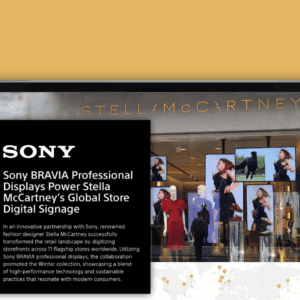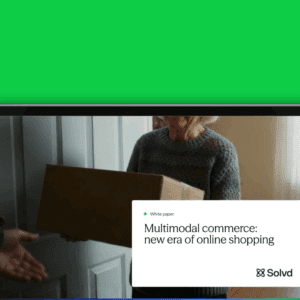Digital Signage Brings Shopper Desires Into Sharper Focus
By Alex Romanov, CEO, iSIGN Media
The stirrings of a retail revolution are all around us. With more and more shoppers turning towards technology, like their mobile phones, tablets and even in-store digital signage to augment their experience in store, a time of unbridled growth and opportunity lies ahead for retailers — with so many new ways that they can improve the customer experience and reach their target customers across a number of different channels.
Advancements in digital signage are one example of how retailers can embrace this revolution. Back in December, the International Sign Association, an industry trade group, announced it was adding a digital signage section to its web site. Then, earlier this month, Samsung Electronics Inc., at the International Sign Expo in Las Vegas, announced a partnership with static sign companies, suggesting that it would begin deploying digital signage “to a new category of customers,” — a move that is further blurring the lines between traditional signs and digital. Lastly, Australian retail chain Coles recently announced that it was testing out interactive tablet displays.
Each development mentioned above builds on earlier success. And I see more and more retailers entering the digital signage landscape today. It’s especially true as installation costs have fallen sharply, with the most recent drops of around 6%. As a result, there has been a snowballing embrace from retailers, who are realizing digital signage’s ROI and customer engagement potential.
Take Mac’s/Couche-Tard, owned by Alimentation Couche-Tard, one of the world’s largest convenience store operators as an example. The chain recently launched a campaign to test digital signage’s effectiveness. Mac’s installed digital signs at 10 store locations throughout Ontario, Canada and launched a 15-second ad promoting a type of breath freshener. Since dog breath can send just about anyone running for the hills, the campaign chose Otis, a Golden Labrador Retriever to get the message out with a toothbrush in his mouth and a “brain bubble” that asked: “How’s your breath?”
Either shoppers suffered a bout of halitosis — or the digital advertising did its job: breath freshener sales were up some 21% during the 10-day test. Ultimately, the spot generated 1,180 ad impressions per location per day, or a total of 118,000 impressions.
The Mac’s/Couche-Tard effort was a major success as above all, digital signage demonstrated its impressive versatility, customer engagement possibilities and ease of installation and use. And unlike static signs, digital signs can be updated in real time and their reach goes far beyond breath fresheners. If, for instance, a weather forecast calls for spring warmth shifting to late-season snow that day, stores can create timely and relevant messaging that encourages shoppers to purchase rock salt or anti-freeze.
What’s more, these signs can also push messaging out to smartphones and other mobile-enabled devices via Bluetooth™ and WiFi connectivity when they’re in close proximity (generally 30-300 ft) to a retail location. This is essential as smartphones and digital signage are complementary technologies; each one augmenting the abilities of the other as communications partners. And considering that US smartphone adoption rates are around 60% and that the average American spends over two-and-a-half hours glued to their glowing screens, digital signage can’t just be about vivid videos or colorful promotions. They must include “smart” elements so that proverbial “window shopping” becomes in-store buying.
Now imagine a pizzeria using digital signage and smartphones to attract new customers. The smell of cheese wafts through the air, the site of gooey mozzarella breaking in long strings from bite to bite, and the crunching sound of crust being folded tantalize customers as they peek in the window. Smart signs and smartphones capture all of these auditory and visual cues. And what better way to satisfy a craving than with a hot slice of Sicilian, Veggie Delight or Manhattan thin crust, all purchased with a deep dish discount sent straight to your device?
In each case, (the above hypothetical and C-store case study) consumers are pleasantly persuaded to purchase something they wouldn’t have necessarily considered but for a brightly lit, high-definition interactive digital sign, or a message delivered to their phones that complements the digital signage advertising right in front of them, offering them a deal or coupon that can be instantly redeemable.
The next-generation of stores will embrace the technology that their customers are using and interacting with. Engaging consumers with interactive digital signage and mobile messaging that reaches customers’ very own mobile phones is a smart way to increase basket size, attracting in-store eyeballs, but also bringing in nearby potential patrons who are primed and ready to make a purchase.
Alex Romanov is CEO of iSIGN Media Corporation, a publicly traded company in Toronto (TSX.V) under the symbol, ISD, and a developer of location-based interactive proximity advertising solutions that deliver rich media, permission-based messages, free of charge to cell and smart phones using Bluetooth connectivity. Alex is an accomplished business executive with a history of identifying opportunities and turning them into high growth and profitable enterprises.






